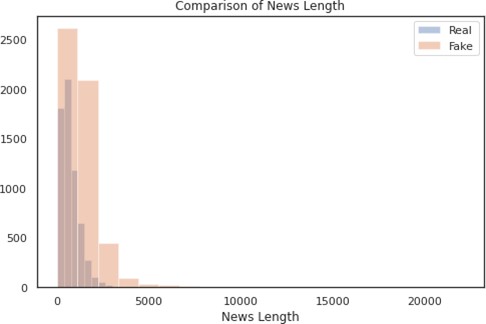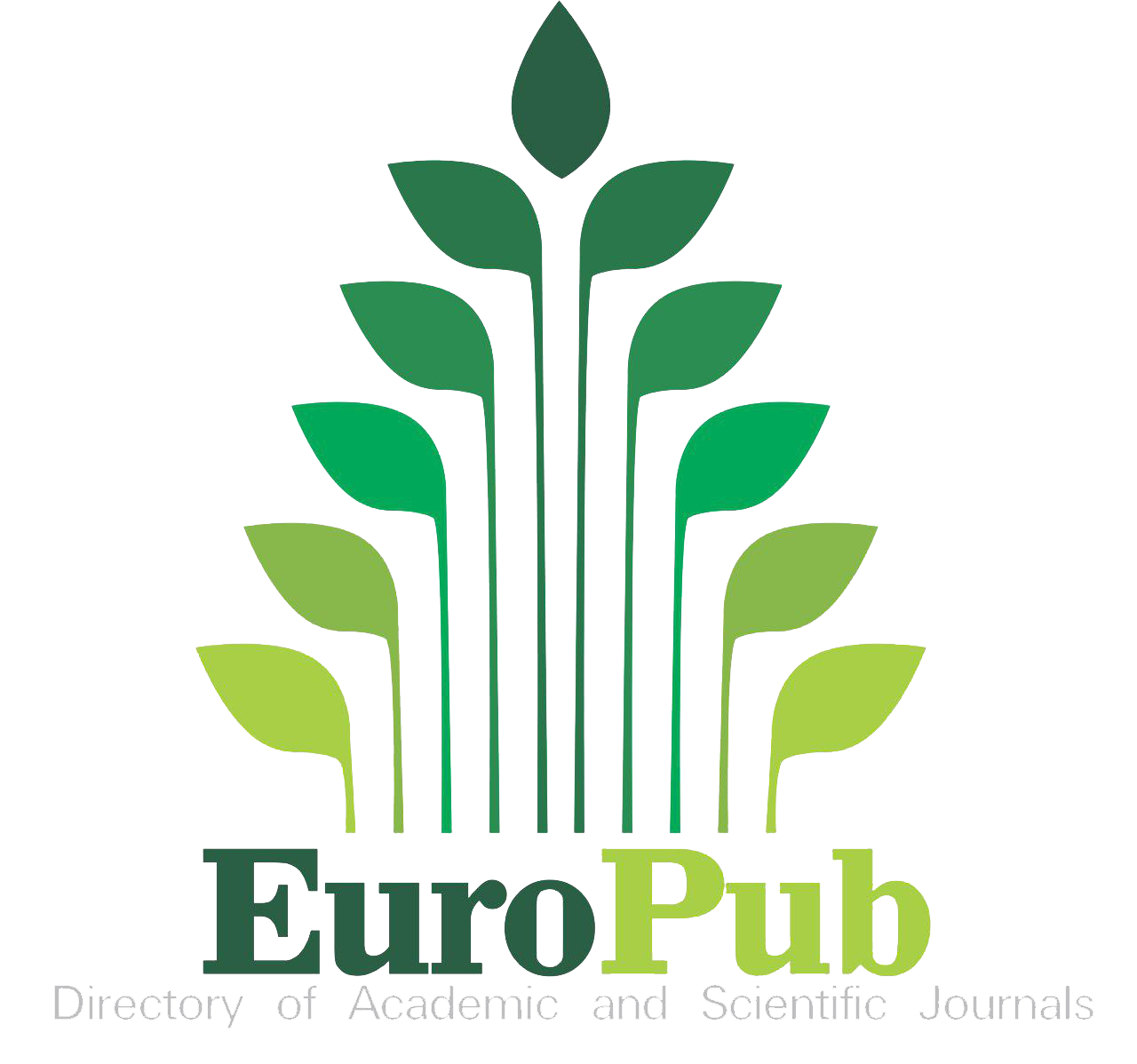Detecting Stance in Urdu Content on Social Media and Websites for Fake News and Propaganda Identification
Keywords:
Deep Neural Networks, Urdu Fake News Detection, Natural Language Processing, ELMO, Deep Machine LearningAbstract
The extensive spread of fake information has rendered various news types questionable, leading to a significant decline in trust in news. Social media is the primary channel by which fake news is disseminated widely. Worldwide, several deep learning methods have been created to identify fake news, achieving significant success with content in the English language. However, to our knowledge, there is no deep learning method available for detecting fake news or stance detection in content written in Urdu. Therefore, it is crucial to create a method that can detect fake news within Urdu language content. This study seeks to identify a method for detecting fake news in the Urdu language by proposing a framework that employs advanced Bidirectional Encoder Representations from Transformers (BERT), Embeddings from Language Models (ELMO), and various deep learning models (CNN, LSTM, Bi-LSTM) to evaluate performance accuracy on Urdu datasets (Liar-ProSOUL and Bend the Truth-Benchmark). We utilized Embeddings from Language Models (ELMO) for feature extraction and a convolutional neural network (CNN) for the classification task. The findings from the suggested framework indicate that ELMO excels with extensive datasets
References
I. A. Muhammad Shoaib Farooq, Ansar Naseem, Furqan Rustam, “Fake news detection in Urdu language using machine learning,” PeerJ Comput Sci, vol. 9, p. e1353, 2023, doi: 10.7717/peerj-cs.1353.
N. A. & M. A. A. Sheetal Harris, Hassan Jalil Hadi, “Multi-domain Urdu fake news detection using pre-trained ensemble model,” Sci. Rep., vol. 15, no. 8705, 2025, doi: https://doi.org/10.1038/s41598-025-91054-4.
M. G. & J. K. Muhammad Rizwan Rashid Rana, Asif Nawaz, Saif Ur Rehman, Muhammad Ali Abid, “BERT-BiGRU-Senti-GCN: An Advanced NLP Framework for Analyzing Customer Sentiments in E-Commerce,” Int. J. Comput. Intell. Syst., vol. 18, no. 21, 2025, [Online]. Available: https://link.springer.com/article/10.1007/s44196-025-00747-1
S. Munir and M. Asif Naeem, “BiL-FaND: leveraging ensemble technique for efficient bilingual fake news detection,” Int. J. Mach. Learn. Cybern., vol. 15, no. 9, pp. 3927–3949, Sep. 2024, doi: 10.1007/S13042-024-02128-0/METRICS.
D. I. Mahmood, “Disinformation and Democracies: Understanding the Weaponization of Information in the Digital Era,” Policy J. Soc. Sci. Rev., vol. 2, no. 2, Aug. 2024.
R. Z. Xinyi Zhou, Atishay Jain, Vir V. Phoha, “Fake News Early Detection: A Theory-driven Model,” Digit. Threat. Res. Pract., vol. 1, no. 2, pp. 1–25, 2020, doi: https://doi.org/10.1145/3377478.
M. N. A. and A. D. F. Gulzar Hussain, M. Wasim, S. Hameed, A. Rehman, “Fake News Detection Landscape: Datasets, Data Modalities, AI Approaches, Their Challenges, and Future Perspectives,” IEEE Access, vol. 13, pp. 54757–54778, 2025, doi: 10.1109/ACCESS.2025.3553909.
P. H. A. Faustini and T. F. Covões, “Fake news detection in multiple platforms and languages,” Expert Syst. Appl., vol. 158, p. 113503, Nov. 2020, doi: 10.1016/J.ESWA.2020.113503.
I. Palacio Marín and D. Arroyo, “Fake News Detection: Do Complex Problems Need Complex Solutions?,” SSRN Electron. J., Sep. 2020, doi: 10.2139/SSRN.3721249.
B. T. and M. A. M. S. Kausar, “ProSOUL: A Framework to Identify Propaganda From Online Urdu Content,” IEEE Access, vol. 8, pp. 186039–186054, 2020, doi: 10.1109/ACCESS.2020.3028131.
M. Amjad, G. Sidorov, A. Zhila, H. Gómez-Adorno, I. Voronkov, and A. Gelbukh, “‘Bend the truth’: Benchmark dataset for fake news detection in Urdu language and its evaluation,” J. Intell. Fuzzy Syst., vol. 39, no. 2, pp. 2457–2469, Jun. 2020, doi: 10.3233/JIFS-179905;JOURNAL:JOURNAL:IFSA;REQUESTEDJOURNAL:JOURNAL:IFSA;PAGE:STRING:ARTICLE/CHAPTER.
M. K. H. and M. U. S. K. Zaheer, M. R. Talib, “A Multi-Kernel Optimized Convolutional Neural Network With Urdu Word Embedding to Detect Fake News,” IEEE Access, vol. 11, pp. 142371–142382, 2023, doi: 10.1109/ACCESS.2023.3341870.
M. A. Farah Rauf, Roha Irfan, Lyba Mushtaq, “Fake News Detection in Urdu using Deep Learning,” VFAST Trans. Softw. Eng., vol. 10, no. 4, pp. 151–167, 2022, doi: https://doi.org/10.21015/vtse.v10i4.1290.
Z. Nasim and S. Ghani, “Sentiment Analysis on Urdu Tweets Using Markov Chains,” SN Comput. Sci., vol. 1, no. 5, pp. 1–13, Sep. 2020, doi: 10.1007/S42979-020-00279-9/METRICS.
M. Q. Alnabhan and P. Branco, “Fake News Detection Using Deep Learning: A Systematic Literature Review,” IEEE Access, vol. 12, pp. 114435–114459, 2024, doi: 10.1109/ACCESS.2024.3435497.
M. A. Mohammad Mahyoob , Jeehaan Algaraady, “Linguistic-Based Detection of Fake News in Social Media,” Int. J. English Linguist., vol. 11, no. 1, 2021, doi: 10.5539/ijel.v11n1p99.
Y. Liu and Y. F. B. Wu, “FNED: A Deep Network for Fake News Early Detection on Social Media,” ACM Trans. Inf. Syst., vol. 38, no. 3, Jun. 2020, doi: 10.1145/3386253;REQUESTEDJOURNAL:JOURNAL:TOIS;TAXONOMY:TAXONOMY:ACM-PUBTYPE;PAGEGROUP:STRING:PUBLICATION.
H. L. Shuo Yang, Kai Shu, Suhang Wang, Renjie Gu, Fan Wu, “Unsupervised Fake News Detection on Social Media: A Generative Approach,” Proc. AAAI Conf. Artif. Intell., vol. 33, no. 1, pp. 5644–5651, 2019, doi: https://doi.org/10.1609/aaai.v33i01.33015644.
A. A. Aldwairi, Monther, “Detecting Fake News in Social Media Networks,” Procedia Comput. Sci., vol. 141, pp. 215–222, 2018, doi: https://doi.org/10.1016/j.procs.2018.10.171.
L. O. Álvaro Figueira, “The current state of fake news: challenges and opportunities,” Procedia Comput. Sci., vol. 121, pp. 817–825, 2017, doi: https://doi.org/10.1016/j.procs.2017.11.106.
A. Saxena, H. Saxena, and R. Gera, “k-TruthScore: Fake News Mitigation in the Presence of Strong User Bias,” Lect. Notes Comput. Sci. (including Subser. Lect. Notes Artif. Intell. Lect. Notes Bioinformatics), vol. 12575 LNCS, pp. 113–126, 2020, doi: 10.1007/978-3-030-66046-8_10.
B. Rath, A. Salecha, and J. Srivastava, “Detecting Fake News Spreaders in Social Networks using Inductive Representation Learning,” Proc. 2020 IEEE/ACM Int. Conf. Adv. Soc. Networks Anal. Mining, ASONAM 2020, pp. 182–189, Dec. 2020, doi: 10.1109/ASONAM49781.2020.9381466.
Fatemeh Torabi Asr and Maite Taboada, “Big Data and quality data for fake news and misinformation detection,” Sage Journals, 2019, [Online]. Available: https://journals.sagepub.com/doi/10.1177/2053951719843310
R. K. Pritika Bahad, Preeti Saxena, “Fake News Detection using Bi-directional LSTM-Recurrent Neural Network,” Procedia Comput. Sci., vol. 165, pp. 74–82, 2019, doi: https://doi.org/10.1016/j.procs.2020.01.072.
S. K. Ishida, Yoshiteru, “Fake News and its Credibility Evaluation by Dynamic Relational Networks: A Bottom up Approach,” Procedia Comput. Sci., vol. 126, pp. 2228–2237, 2018, doi: https://doi.org/10.1016/j.procs.2018.07.226.
A. A. Tahani Alsaedi, Muhammad Rizwan Rashid Rana, Asif Nawaz, Ammar Raza, “Sentiment Mining in E-Commerce: The Transformer-based Deep Learning Model,” Int. J. Electr. Comput. Eng. Syst., vol. 15, no. 8, 2024, doi: https://doi.org/10.32985/ijeces.15.8.2.
A. Trivedi and S. Sangeetha, “Enhancing neural network predictions with finetuned numeric embeddings for stock trend forecasting,” Soft Comput., vol. 29, no. 3, pp. 1829–1844, Feb. 2025, doi: 10.1007/S00500-025-10483-5/METRICS.

Downloads
Published
How to Cite
Issue
Section
License
Copyright (c) 2025 50sea

This work is licensed under a Creative Commons Attribution 4.0 International License.




















